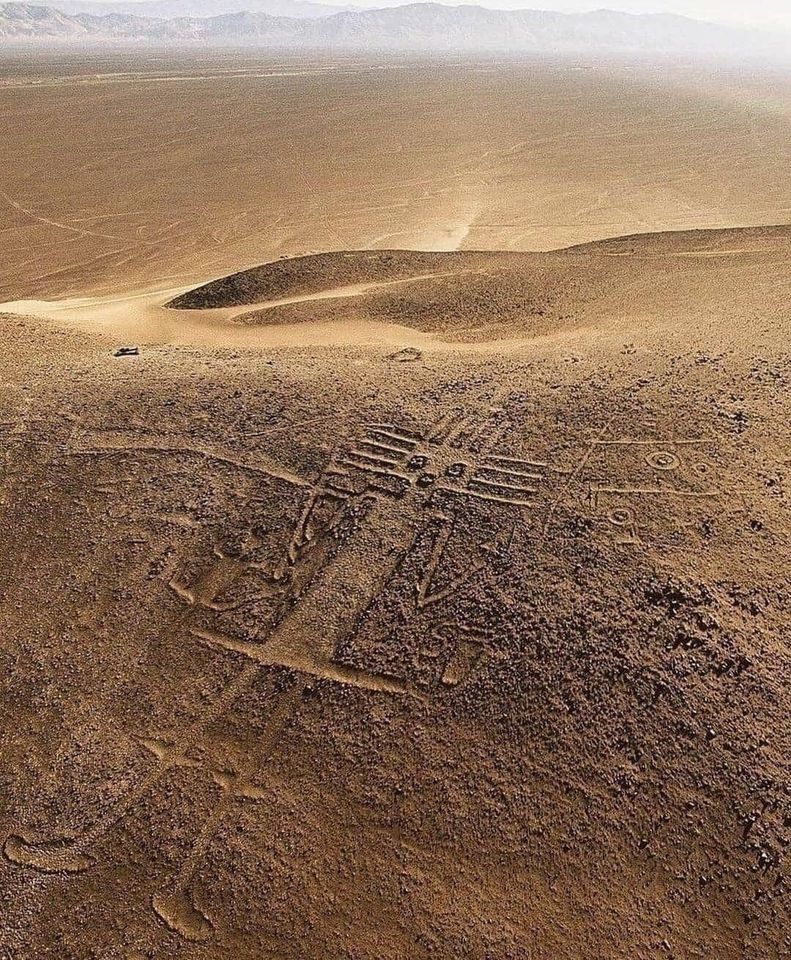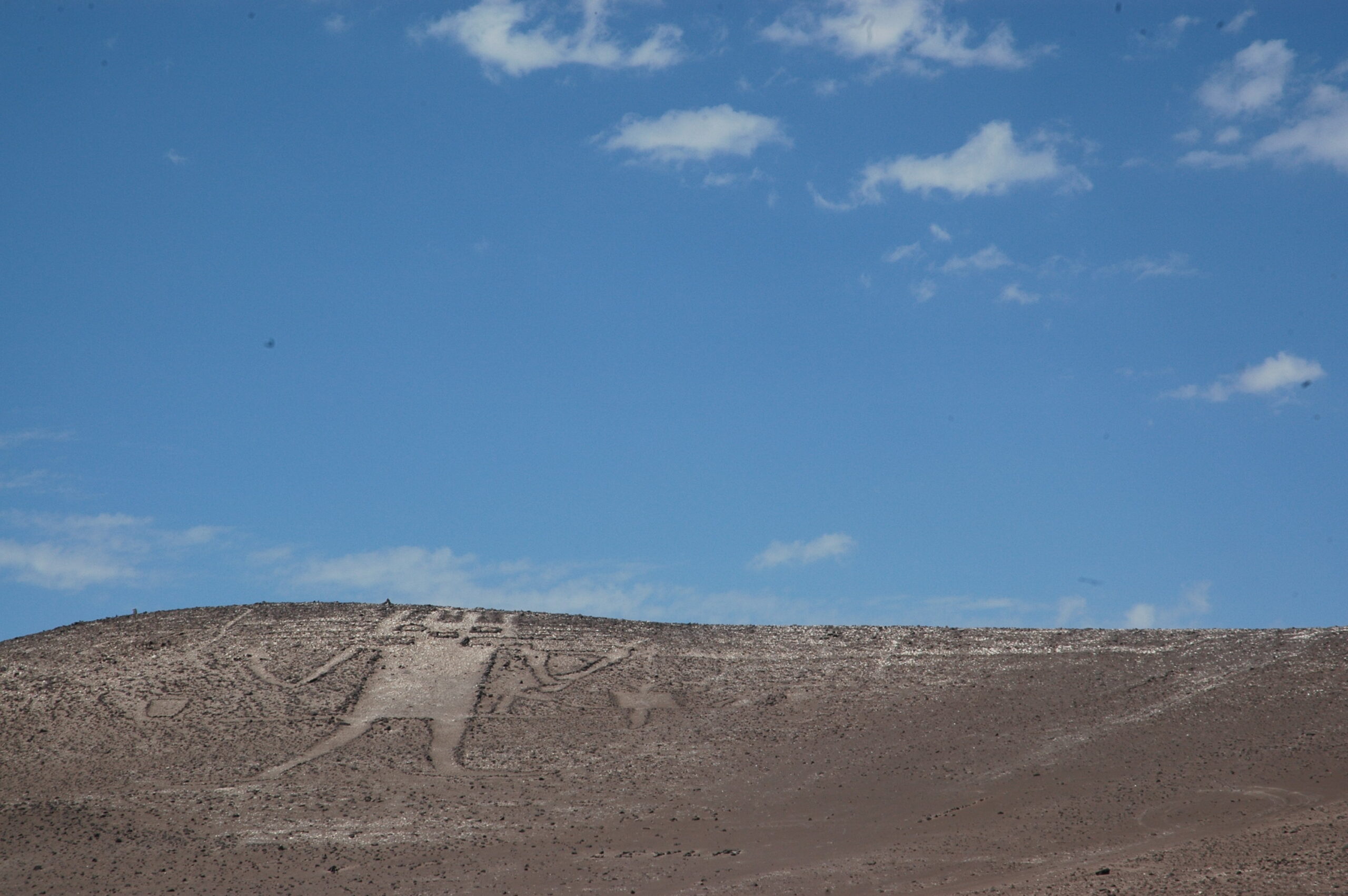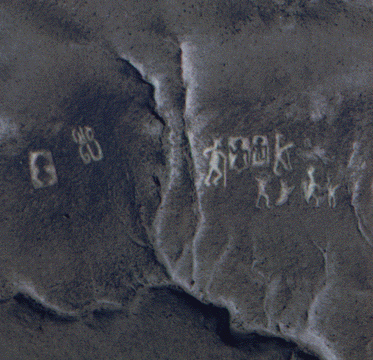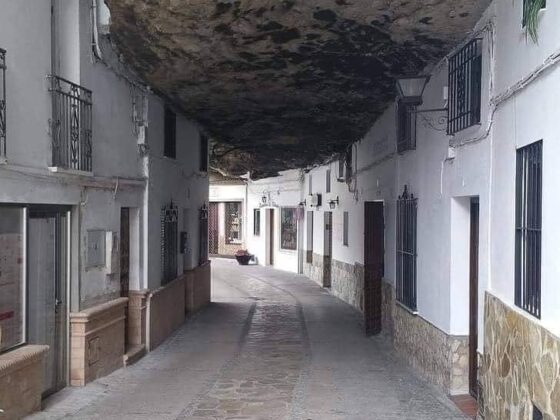While the Nazca Lines of Peru may be the world’s most famous geoglyphs, the Atacama Desert in Chile boasts an equally impressive and far more numerous collection of ancient ground drawings. Among these, the Atacama Giant stands out as one of the most intriguing and controversial figures, continuing to spark debate among researchers and enthusiasts alike.
The Atacama Giant: A Colossal Mystery
The Atacama Giant, also known as the Giant of Tarapacá or the Geoglyph of Cerro Unita, is a massive anthropomorphic figure etched into the side of a hill in the Atacama Desert. At approximately 119 meters (390 feet) tall, it is the largest prehistoric anthropomorphic geoglyph in the world[1].
Located on the Cerro Unitas hill in the Tarapacá Region of Chile, this enormous figure has captivated researchers and visitors alike. Its sheer size and the mystery surrounding its creation and purpose make it a standout among the thousands of geoglyphs scattered across the Atacama Desert[2].
A Rich Tapestry of Desert Art
The Atacama Giant is just one of nearly 5,000 geoglyphs that have been discovered in the Atacama region over the last three decades. These ancient artworks, drawn into the landscape, range from geometric patterns to animal and human figures. They are believed to be the work of several successive cultures that inhabited this region of South America, including the Tiwanaku and Inca[1].
Unlike the Nazca Lines, which are primarily visible from the air, many of the Atacama geoglyphs, including the Giant, can be seen from ground level due to their positioning on hillsides. This has led to fascinating questions about their intended audience and purpose[5].
Theories and Interpretations
The true meaning and purpose of the Atacama Giant remain subjects of debate among researchers. Several theories have been proposed:
- Astronomical Calendar: Some researchers suggest that the Giant served as an early astronomical calendar. The points on the top and side of the head could have been used to track the moon’s position, helping to determine the day, crop cycle, and season[1].
- Shamanic Figure: Others propose that the Giant represents a shaman or yatiri, a spiritual figure in Andean cultures known for making predictions, invoking spirits, and practicing healing[2].
- Andean Deity: Some legends associate the Giant with Tunupa-Tarapacá, an Andean deity believed to have journeyed from Lake Titicaca to the Pacific Ocean[2].
A Window into Ancient Cultures
The Atacama Giant and its fellow geoglyphs offer a fascinating glimpse into the beliefs, practices, and capabilities of ancient Andean cultures. Created between 900 and 1450 AD, these artworks demonstrate the impressive skills of their creators, who managed to produce such large-scale, precise designs with the limited tools available at the time[2].
The geoglyphs’ purposes likely varied, ranging from ceremonial and ritual functions to serving as guideposts for travelers on ancient trade routes between the highlands and coastal lowlands[5].
Preserving a Fragile Heritage
As with many ancient sites, the geoglyphs of the Atacama Desert face challenges from both natural erosion and human activity. Efforts are ongoing to document, study, and preserve these remarkable artworks for future generations.
As research continues, these enigmatic figures may yet reveal more secrets about the civilizations that created them, offering valuable insights into humanity’s past and our drive to leave our mark on the world.












